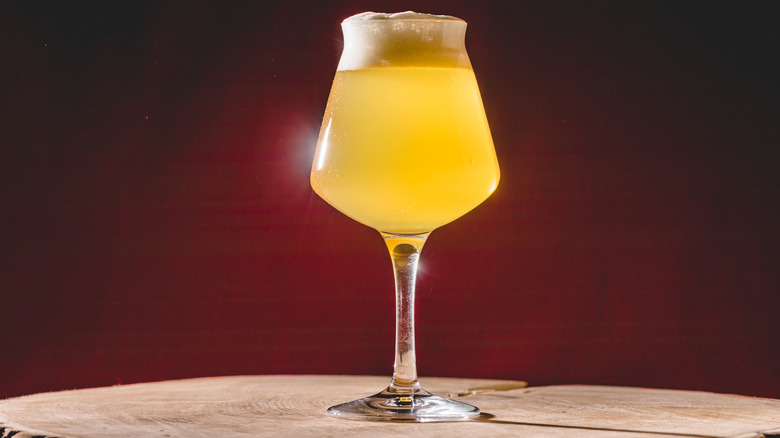Is There Really A Difference Between A Gose And Sour Beer?
The world of craft beer can get a bit confusing. There are lagers and stouts and Belgians and pilsners. On a single menu you might see a pale ale, an IPA (India Pale Ale), a NE IPA (New England IPA), and a hazy IPA. If you're just a casual beer drinker, just decoding a bar's menu can seem an almost impossible feat.
One area that can be even more confusing, if only because of their relatively new appearance on the craft beer scene, is that of the sour beer family. They have an old history, but truly only started to become popular in American beer culture in the 1970s with the introduction of Belgian lambics. On some menus you'll see a list of sours, on others you'll see some beers called goses. They might be listed with the sours, they might not. Is there really a difference between a gose and sour beer?
The simple answer is yes. A gose is a beer specifically brewed with salt and coriander, while a sour is a wide range of beers, brewed with a variety of different ingredients, that have sour flavor notes. So while a gose can be sour, not all sours are goses.
Goses and sours could be considered cousins
Goses can trace their history back to Goslar, Germany. The first documented instance of a gose being brewed was in the year 1000, although it appears they truly didn't become popular until the 1700s. However, by the 1960s, this style of beer seems to have disappeared entirely, only reappearing in the 1990s when some enterprising German brewers decided to resurrect the style in a brewery in Leipzig, Germany.
Modern sour beers, on the other hand, are mostly thought to have originated in nearby Belgium, around or slightly after the same time goses became more popular in Germany. They also undergo added fermentation which can make sour beers more, well, sour. The discovery of yeast in the 1800s allowed both styles to be more commercially produced, and the two could probably be considered cousins. Similarities between the two (aside from sour flavors) include that traditional sours like lambics. Berliner Weisse, as well as goses, are considered wheat beers, and are both usually low in ABV (alcohol-by-volume).
The distinctions may not matter much to other than the most die-hard of beer nerds, but the subtle difference between a gose and a sour might be that one bit of trivia that impresses your friends on the next visit to your local brewery. And if this little history lesson has whet your whistle, we've got a list of the best sour beers for 2023.

